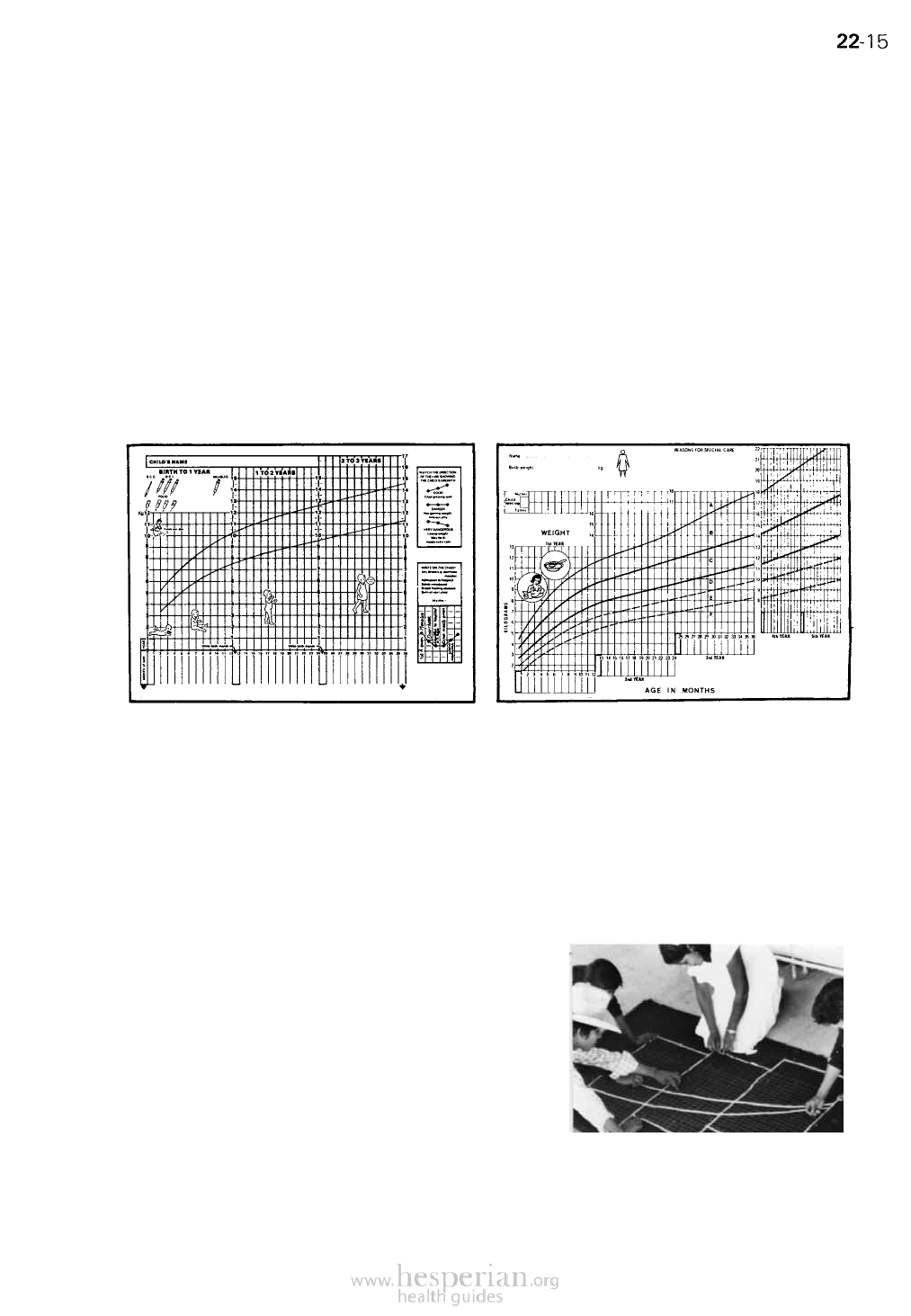
22-17
LEARNING TO USE AND UNDERSTAND GROWTH CHARTS
Health workers who are not used to reading charts and graphs may at first have
difficulty recording babies’ weights accurately or interpreting what they mean. But
with appropriate teaching methods, health workers can quickly learn to understand
and use weight charts. They also can learn to teach non-literate mothers to follow
the growth of their children on the ‘Road to Health’.
Choosing an appropriate chart
Different types of age-weight charts are used by different programs. We
prefer David Morley’s ‘Child Health Chart’ because of its simplicity (see page
25-9 or Where There Is No Doctor, p. 299). But others prefer more complex
charts.
Preferred by mothers and
those who work with mothers
Preferred by health
authorities and data experts
Morley’s Child Health Chart has only two curved
lines. The lines clearly form a ‘road’, the ‘Road to
Health’. Even mothers who cannot read can learn
to see whether their children are growing well or
falling below the ‘Road to Health’.
Other charts have additional lines for estimating
different degrees of malnutrition. Although perhaps
more useful for conducting large surveys, these charts
are often confusing to mothers.
Charts for teaching
The basic teaching aid for learning to use a growth chart is the chart itself.
Practice charts can be copied at relatively low cost. Copies of the ‘Road to
Health’ chart are available from TALC (see p. Back-3).
A large flannel-board chart is particularly
useful for group practice. These can be purchased
from TALC—or better still, they can be made by
the student health workers or a mothers’ group.
If students are not used to drawing, but have
experience in sewing, they can make the chart
by sewing strings and ribbons onto a flannel
cloth. That way they build on skills they already
have, rather than struggling with an activity that is
foreign to them. (This idea was discussed on
page 11-4.)
Sewing a ‘Road to Health’ chart.
(Ajoya, Mexico)